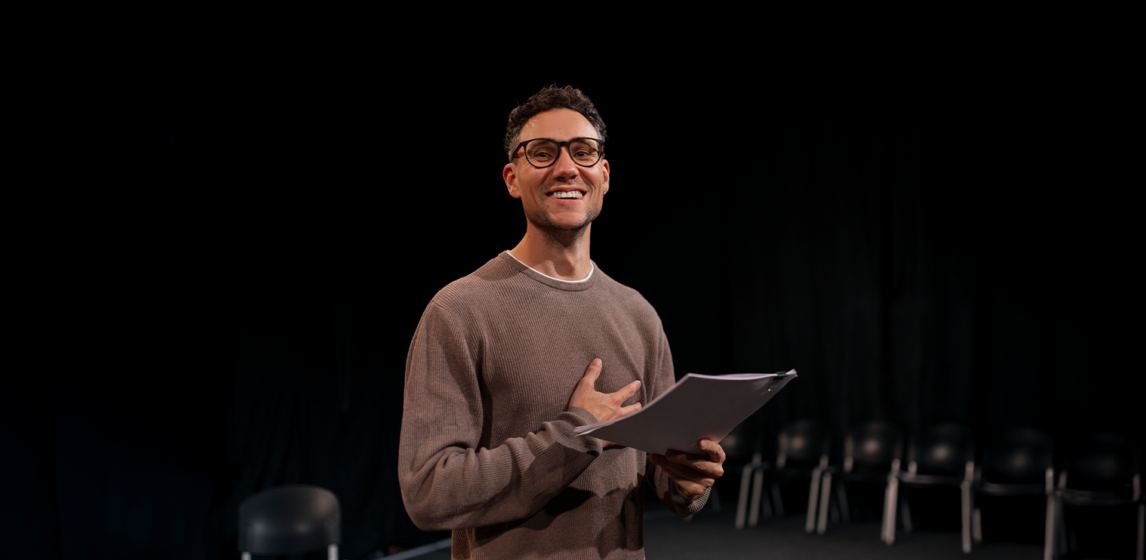Anonymous Unmasked: Using Halloween to Help Kids Understand Digital Identity
 Art Bamford | Oct 26, 2018
Art Bamford | Oct 26, 2018
Photo by rawpixel
We want to talk more about media with our kids, but we’re not always sure how. This post is part of a series celebrating our newest resource, Every Parent’s Guide to Navigating Our Digital World, which offers tools to help parents think differently about digital media, talk more about it together, and be inspired by the ideas of other parents navigating these same waters day after day. Join the community of families who are #navigatingdigitally.
It is always fun to see the way a Halloween costume changes a kid’s demeanor.
Give a boy a set of foam Hulk muscles and he’ll start stomping around and growling loudly. Or put a girl in a princess costume and watch her twirl dramatically, singing at the top of her lungs.
Halloween is a day when we give kids permission to put on costumes and pretend to be someone else—in a fun, safe way.
For today’s parents, the issue of identity is one of the trickier topics to deal with when it comes to how young people use digital media. Halloween can be a great opportunity to talk with your kids about how identity works online.
Younger kids typically use media to play games as avatars. An avatar is something that represents us within the fictitious world of a game. Kids choose a character to “be,” but don’t see that choice as related to who they really are. For younger kids, game avatars are a lot like Halloween costumes in this sense—they just pick a character they like. And change their mind tomorrow.
As kids get older, they start to think more about costumes as personal and social statements. Factors like their friends’ costumes, and how their peers will perceive them, carry more weight as they decide who and what to be. For adolescents in the process of forming their own identities, Halloween represents a rare opportunity to do something that society doesn’t let them do often—“try on” being somebody else.
Young people experience a similar kind of transition as they go from using game avatars to sharing as their ‘real’ selves on social media. The distinctions between childish play and grown-up socializing get murky.[1]
When it comes to the online behavior of both young people and adults, researchers have found that a feeling of anonymity is one of the main factors that cause us to behave badly in digital spaces. Like teens egging a house on Halloween night, we’re more likely to trash somebody else’s walls when (we think) we’re well hidden behind a mask.[2]
One of the really difficult things for adolescents to figure out as they begin using social media is this difference between an avatar and the “costume” of anonymity.
Not all anonymity is bad. Digital spaces are a lot like Halloween in how they provide young people with outlets to explore their identities and have fun with their friends in the process. This is why apps that let users share anonymously are often so popular among teens. But it is important to help young people recognize the boundaries and limits of this. Participating on social media can also feel a bit too much like a game that rewards users for hurting or outdoing on-screen enemies. [3]
If your kids are relatively new to the world of social media, think about using this Halloween as a teachable moment that helpfully illustrates the way we’re able to participate in digital spaces as an avatar, anonymous user, or authentic self. Ask questions like, “What’s the difference between the avatar version of you and the real-life version of you?” “How do you feel about the way you relate to other people online [through gaming or social media], and how they relate to you?” “Are your relationships in real life with these people similar or different? How does that make you feel?” One of the most important lessons for young people to learn is how, unlike an avatar, the actions of a costumed character online have real consequences for the offline people they conceal.

[1] Livingstone, Sonia. Children and the Internet. Polity, 2009, pg. 12-23.
[2] Wright, Michelle F. "Predictors of anonymous cyber aggression: the role of adolescents' beliefs about anonymity, aggression, and the permanency of digital content." Cyberpsychology, Behavior, and Social Networking 17, no. 7 (2014): 431-438.
[3] Davis, Katie. "Friendship 2.0: Adolescents' experiences of belonging and self-disclosure online." Journal of Adolescence 35, no. 6 (2012): 1527-1536.
More From Us



Sign up for our email today and choose from one of our popular free downloads sent straight to your inbox. Plus, you’ll be the first to know about our sales, offers, and new releases.



